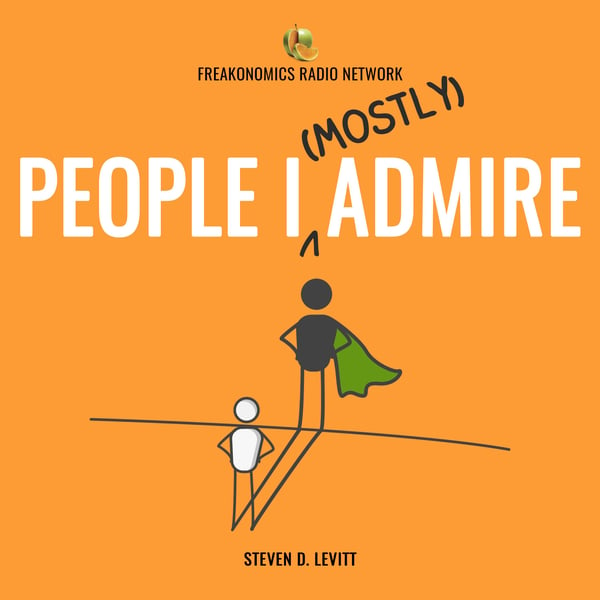144. Feeling Sound and Hearing Color
People I (Mostly) Admire
Freakonomics Radio + Stitcher
4.6 • 1.9K Ratings
🗓️ 9 November 2024
⏱️ 62 minutes
🧾️ Download transcript
Summary
Transcript
Click on a timestamp to play from that location
| 0:00.0 | I love podcast guests who changed the way I think about some important aspect of the world. |
| 0:10.0 | A great example is my guest today, David Eagleman. He's a Stanford neuroscientist whose work on brain plasticity has completely transformed my understanding of the human brain in its possibilities. |
| 0:24.1 | The key thing about the human brain is it's about three pounds. It's locked in silence and darkness. |
| 0:29.2 | It has no idea where the information is coming from because everything is just electrical spikes and also chemical releases as a result of those spikes. And so what you have in |
| 0:39.8 | there is this giant symphony of electrical activity going on. And its job is to create a model |
| 0:46.1 | of the outside world. Welcome to people I mostly admire with Steve Levitt. |
| 0:56.2 | According to Eagleman, the brain is constantly trying to predict the world around it. |
| 1:00.9 | But, of course, the world is unpredictable and surprising, |
| 1:03.9 | so the brain is constantly updating its model. |
| 1:07.1 | The capacity of our brains to be ever-changing is usually referred to as plasticity, but |
| 1:12.1 | Eagleman offers another term, live wire. |
| 1:15.1 | That's where conversation begins. |
| 1:23.1 | Plasticity is the term used in the field because the great neuroscientist or psychologist actually, William James, |
| 1:30.9 | coined the term because he was impressed with the way that plastic gets manufactured, |
| 1:35.0 | where you mold it into a shape and it holds onto that shape. And he thought, that's kind of like what the brain does. |
| 1:40.4 | The great trick that Mother Nature figured out was to drop us into the world half-baked. |
| 1:46.6 | If you look at the way an alligator drops into the world, it essentially is pre-programmed. It eats, |
| 1:52.2 | mates, sleeps, does whatever it's doing. But we spent our first several years absorbing the world |
| 1:57.7 | around us, based on our neighborhood, in our moment and time, and our neighborhood and our moment in time and our culture |
| 2:01.2 | and our friends and our universities. We absorb all of that such that we can then springboard |
| 2:07.4 | off of that and create our own things. There are many things that are essentially pre-programmed in |
| 2:13.1 | us, but we are incredibly flexible. And that is the key about live wiring. |
... |
Please login to see the full transcript.
Disclaimer: The podcast and artwork embedded on this page are from Freakonomics Radio + Stitcher, and are the property of its owner and not affiliated with or endorsed by Tapesearch.
Generated transcripts are the property of Freakonomics Radio + Stitcher and are distributed freely under the Fair Use doctrine. Transcripts generated by Tapesearch are not guaranteed to be accurate.
Copyright © Tapesearch 2025.

